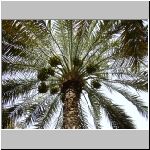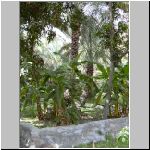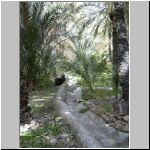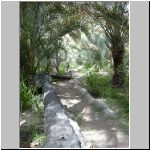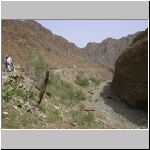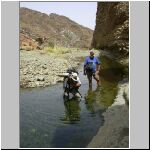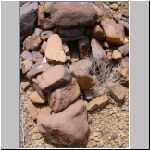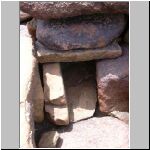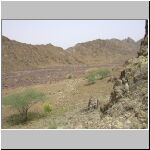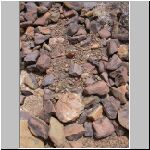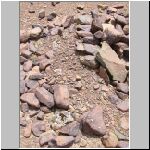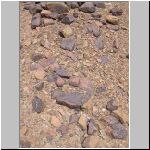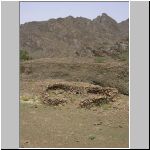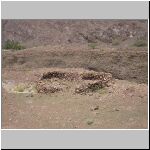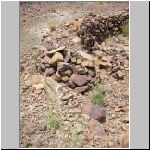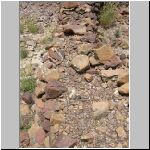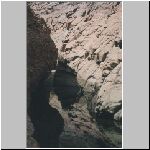ENHG Field Trip: Wadi Subaitnah 9 May 2003
ENHG Field Trip: Wadi Subaitnah 9 May 2003
Members of the Al Ain chapter visited Wadi Subaitnah Friday May 9 to inspect the impact of recent rainfall on plantlife in the wadi.
Wadi Subaitnah was one of the favorite places to visit for Marijcke Jongbloed, author of the latest publication of plants of the United Arab Emirates and northern Oman. Marijcke, who has retired to France, would have enjoyed Friday's outing as the plant growth was considerable with flowers in abundance and some plants in flower. The plants may be successful in setting seed before the intense summer heat arrives.
In the falaj system that snakes from the reservoir beside the mosque to the weir about a kilometer up the wadi, there were numerous toads, some considerably larger than normally seen in the falaj systems. There were also a number of tadpoles, water scorpions, snails and other life.
Brigitte Howarth erected the malaise trap and, by the end of the walk, there were a number of insects in the reservoir. (Watch for news of analysis of the collection later.)
Some in the group crossed over to the opposite side of the wadi for the return trip from the weir. On a recent moonlight photography trip to the wadi, some had observed structures on the plateau on the opposite side of the wadi. A closer inspection revealed what are most likely two corrals for keeping animals overnight. There was one well constructed fox trap nearby. There were also at least three graves, two of which appeared to be classic Islamic period graves. These features were linked with a very clear path.
There were a number of other interesting features -- collections of stacked rocks -- that remain a mystery. The most curious observation was an area about 10 m across and about 200 m long, cleared of stones. It looked like an ideal landing strip for ultra-light aircraft! The real reason for the stone clearing is unclear.
The most exciting observation was what appeared to be the remains of what are known in the Group as a 'donkey trail' from the settlement area back into the mountains, several meters above the falaj system on the western side of the wadi. The trail has deteriorated considerably; the stone walls that supported the trail at one time are no longer visible as compared to the 'donkey trail' at Wadi Khutwah, for example. We hope to follow the trail, if possible, on a future visit to the wadi.
A single piece of pottery was found; it appeared to be Islamic which conforms to the style of grave observed.
What was not observed was any indication of copper smelting. Wadi Subaitna is one of the view communities in the area from the Sohar Road to Wadi Sharm that does not have any evidence of copper smelting. This is especially interesting given the proximity of Wadi Subaitna to the only known site of industrial copper smelting in the district, the industrial copper smelting site likely between 1500 and 2000 years old.
The explanation for the lack of evidence of copper smelting coule be the relatively small size of the Subaitna community; there are only a handful of houses in the community and a few farms. The geological features of Subaitna also make it an inconvenient place to undertaken all of the functions associated with copper smelting as a cottage industry, namely the making of bricks (require clay deposits and lots of water), lots of trees for the production of charcoal, and a population sufficiently large to devote a number of individuals to the construction, operation and management of the smelters.


